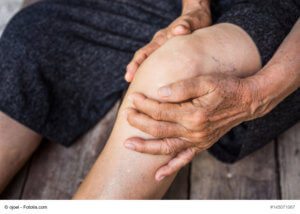If you have unexplained leg pain, especially after you walk or exercise, you could be one of the eight to ten million people in the United States who suffer from Peripheral Artery Disease (PAD). This condition is often difficult to diagnose, leaving many sufferers untreated, which is a serious problem due to the danger that it can pose.
 What is PAD?
What is PAD?Peripheral Artery Disease is caused by a narrowing of the peripheral arteries. While it most commonly affects the legs, it can also be found in the stomach, arms, and even your head. Arteries begin to narrow when plaque, which is made up of cholesterol, calcium, fibrin, and fatty substances, builds on the walls of the artery. The disease restricts the amount of blood flow and raises blood pressure. In severe cases, a blood clot can form and completely stop your blood flow, which can result in a stroke or heart attack.
Why is that the case? Your circulatory problems prevent blood from moving through your body as it should. At the early stages, this may cause PAD leg pain, as your lower limbs struggle to get enough oxygen-rich blood. Later on, that can translate to heart attacks if blood flow to your organ is compromised. Or, it could lead to clotting as blood backs up in your arteries, followed by stroke if a clot suddenly bursts near your brain.
You could have PAD and not notice any symptoms until your disease progresses. Others may mistake their PAD symptoms for another condition. To avoid misdiagnoses and missed diagnoses, it is important to learn the most commonly observed symptoms of PAD. They include:
Patients are more at risk for peripheral artery disease when they:
Diagnosing peripheral artery disease is painless. And there are many ways to test for PAD, so your health care provider will perform a physical examination to determine which to choose. In addition, your doctor may perform:
Ankle Brachial Index: This compares the blood pressure in your feet to the blood pressure in the arms. It determines if your blood pressure is faltering in one area or throughout the body. Next, there are ultrasounds, which use sound waves to measure blood flow and visualize blockages in your arteries. Alternatively, you may need angiography: you'll get a colored dye injection in your blood vessels. Then, we'll trace the dye with an imaging device, so we can follow your blood path and determine where the problems lie. Finally, you may need blood tests to determine if your symptoms are the result of diabetes or other issues.
While the pain in your legs could be a sign of PAD, varicose veins can also leave you with leg pain. But it's unlike PAD leg pain, which feels crampy and is usually linked to movement. When varicose veins are to blame, the pain in your legs is dull and achy. This condition can make your legs feel heavy, or you may even experience a burning sensation.
Like PAD, developing one or more varicose veins is a sign of trouble in your circulatory system. It is not merely a cosmetic concern. For that reason, if you notice any kind of leg pain, it's important you make an immediate appointment with us today. Our vein specialists in Houston and Dallas are standing by to help you find relief. During a comprehensive exam, we can diagnose the cause of your discomfort and get you on the path to recovery!

Scheduling
Please contact our dedicated specialists to schedule a consultation today.
2025 Texas Endovascular. All rights reserved. Website Design by Healthcare Success